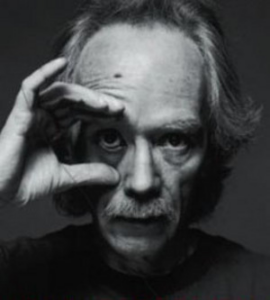Do you ever wonder what a biopic is or what qualifies as one? Biopic films appear to be omnipresent in today’s cinema. Old historical figures, musicians, politicians, and “normal” individuals dealing with exceptional situations are featured. Biopic films have been more popular in recent decades, but they are not new. Biopics have been a feature of the cinematic world since its inception. So, what is a biopic? What does it usually involve? How has the genre progressed to its current state?
Let’s explore.

Robert Downey Jr in & as “Chaplin.”
What is a Biopic?
A biopic is a movie that tells the story of a real, non-fictional person’s life. A biopic, which stands for “biographical motion picture,” might chronicle a person’s entire life or a single event in their history. Biopics can cover a wide range of subjects, including historical people as well as contemporary celebrities.
Features of a Biopic
Revolves around a Single Character
Biopics are focused on a single character, which is why the title of so many biographical films is simply the protagonist’s name: Ali, Gandhi, Malcolm X, Patton, and Selena are just a few examples.

Will Smith in & As “Ali.”
In some cases, the main character is a small group of genuine people—usually a band. For example, the protagonist in F. Gary Gray’s Straight Outta Compton is the rap group N.W.A.
Paints a Striking Picture of the Protagonist’s Life
A biopic doesn’t have to depict the protagonist’s complete life from birth to death, but it should represent a significant amount of it. A biopic is not a film that portrays the story of one event in a genuine person’s life. The actual narrative of the three real astronauts who flew the Apollo 13 mission to the moon, for example, is told in Ron Howard’s Apollo 13. This film is not technically a biopic because it concentrates entirely on that one event and does not record more of the astronauts’ lives.
Being Subjective
Biopic filmmakers frequently take artistic license with the subject’s life story. To heighten the tension and create a more engaging film, they may condense dates, delete information, and rework critical conversations. Some biopics, such as Steve Jobs, directed by Danny Boyle and scripted by Aaron Sorkin, may employ surface-level facts about a person as a framework for a somewhat fictional narrative.

Michael Fassbender in &as “Steve Jobs.”
Genre Fluidity in Biopics
While all biopics are essentially films about real people, they differ in a variety of ways. A western outlaw; a criminal; a musical composer; a religious figure or leader of a movement; a war-time military hero; an entertainer; an artist; an inventor, scientist, or doctor; a politician or President; a sports hero or celebrity; or an adventurer are all examples of big-screen biopics and they cover a lot of genres.
Accuracy in Biopics
The most obvious way in which a biopic distinguishes itself is in its historical accuracy. A biopic can be nearly entirely fictional, employing only surface facts to construct a primarily made-up narrative, depending on the story you portray.
A director may be more interested in making a film about the person’s mythology rather than the facts if the biopic is about someone who has a tremendous mystique surrounding them.
Unfortunately, a biopic that is 100 percent accurate is impossible. Movie Directors will only have so much to work with if the picture is based on someone who lived centuries ago. Even though the facts are known in some of these circumstances, the mystique surrounding a person may be a stronger pull or a more compelling story.
Take Todd Haynes’s‘ I’m Not There, for example, in which many performers play Bob Dylan. This diverse cast is more than just a marketing trick; it highlights Dylan’s own continually fluctuating personas.
Biopics of people from the twentieth century are frequently detected, embellishing the facts to make the subject appear better or worse than they were. So, if you make a biographical film on someone who is still living, you will undoubtedly be informed how good or bad it is.
Biopics, on the other hand, frequently distort reality to make a better film. This is nothing new; artworks and plays have twisted reality in some fashion for the art. After all, movies are not exactly real life, and if someone truly wanted to know the details of someone’s life, they could read a biography.
The Rise of Biopics
Biographical films have always been popular, which may surprise people. Biopics, which generally focused on historical people such as Peter the Great, Joan of Arc, Napoleon Bonaparte, and even Jesus of Nazareth, were the first films ever made.
Abraham Lincoln and George Armstrong Custer are two historical individuals who lived around the same time and had multiple biopics made about them during the early years of cinema. Custer’s Last Fight, The Plainsman, Santa Fe Trail, and They Died with Their Boots On are among them. However, many of these films have been chastised for embellishing and romanticizing Custer’s life narrative.
Before 1950, Abraham Lincoln was the subject of a slew of biopics. Young Mr. Lincoln (1939), directed by John Ford and starring Henry Fonda as Lincoln, is undoubtedly the most well-known and revered of these numerous biopics. However, unlike other films on US presidents, Young Mr. Lincoln concentrates solely on Lincoln’s early years as a young lawyer in Illinois. He worked on a murder case.
Young Henry Ford on Mr. Lincoln
Aside from historical personalities, early biopics featured current-day celebrities. For example, Yankee Doodle Dandy (1943), starring James Cagney, centers on George M. Cohan. Known as “The Man Who Owned Broadway,” it is perhaps the most famous early-day biopics. Regardless of how realistic it is, it was a great hit, garnering numerous prizes and critical acclaim.
Yankee Doodle Dandy also highlights one of the most crucial aspects of biopics: their appeal. Aside from the fact that viewers want to witness a dramatization of a real person, biopics demand actors to “be” the genuine person, which can be difficult. As a result, seeing how an actor manages to look so much like a real-life subject can be rather impressive.
This success can lead to prizes, which numerous biopics have received. However, regardless of the quality of the plot, the main pull for biographical films is frequently the performance, which ends up being either the most significant element or the least significant part.
Changes in the World of Biopics
As cinema began changing, so did the meaning of biopics. While they still retain similar act structures and an air of romanticism, biopic films started to cover a more significant variety of subjects. Additionally, the rate of biopics being released rocketed, especially after the 1940s.
Casting in a Biopic
Finding the right person to play the subject of a biopic is difficult enough; finding the right person to play the subject of a biopic is a very different difficulty. It is a never-ending dispute on whether you choose someone because they look like the person or act like the person. While some believe that the most crucial factor is performance, others argue that it is more necessary to appear like the subject.
Furthermore, suppose the film does not portray a subject that others consider fair. In that case, it may generate issues for the actor showing the subject.
Some biopic films have avoided this problem by having the subjects star based on their lives. Howard Stern in Private Parts (1997) and Jackie Robinson in The Jackie Robinson Story (1950) are two notable instances.
Biopics can cover a wide range of film genres. While films like Lawrence of Arabia (1962) and Cleopatra (1963) exploited their themes to convey big stories, new forms of biopics began to emerge.
While Spartacus (1960) was an epic movie about the Third Servile War (73-71 BC), it also critiqued the recent Communist witch hunt that resulted in The Hollywood Blacklist.
Andrei Rublev (1966), while being set in the 15th century, criticizes the Soviet Union’s restriction of artistic and spiritual freedoms at the time. First, the picture was prohibited and then suppressed in the Soviet Union because Andrei Tarkovsky directed it.
Bonnie and Clyde, a (simplified) biopic, was one of the most divisive films of the 1960s (1967). The picture contained unabashed sex and brutality that broke new ground in American cinema and starred Warren Beatty and Faye Dunaway as the quintessential crime couple. It is now widely acknowledged as one of the earliest films to emerge from the budding and crucial New Hollywood period.
Mishima: A Life in Four Chapters (1985), directed by Paul Schrader, takes a more artistic approach to the biopic later in the 1980s. Schrader devised a biopic that dared to be far more creative than factual. It balances its focus between the final day of Yukio Mishima’s life and redoing some of his stories. The answer to the question “What is a biopic?” is profoundly complicated by this film.
Biopic in the Modern Day
As the twentieth century gave way to the twenty-first, biographical films evolved to incorporate lesser-known personalities with well-known ones. In this video, film critic David Edelstein examines some recent and classic biopic instances, as well as the genre’s enduring popularity.
Politicians and entertainers have dominated the biopic landscape for the past few decades. As a result, many significant biopics have been about American political personalities, be it a recent US president or someone working in Washington, D.C.
For example, in the 1990s, Richard Nixon was able to have two different movies created about him. Oliver Stone’s Nixon (1995) was the first. As a result, a massive three-hour-plus drama starring Anthony Hopkins focused on his personal life and politics.
Dick (1999), starring Kirsten Dunst and Michelle Williams as two adolescents who become embroiled in the Watergate crisis, was the other. While Dick is a comedy, it is still based on a true story. Moreover, it portrays a genuine politician (Dan Hedaya as Nixon).
While politicians are entertaining to watch, it appears that no other industry receives as much biopic attention as music. For example, in 1979, a made-for-television biopic of Elvis Presley (simply titled Elvis) starring Kurt Russell and directed by John Carpenter was released (their first collaboration).
A stage play about Wolfgang Amadeus Mozart was transformed into the film Amadeus (1984), directed by acclaimed Czech filmmaker Milos Forman. Finally, Selena Perez got one with Selena (1997), which starred Jennifer Lopez and sparked debate due to the casting.
Many more music biopics have been released since the 1970s, demonstrating their popularity and saturation. Two recent and well-known examples are Straight Outta Compton (2015) and Bohemian Rhapsody (2018), two recent and famous examples, with the latter becoming the highest-grossing biopic of all time.
It’s also worth noting how predictable biographical films may be, especially when the subject is music. Patrick (H) Willems provides a detailed study of music biopics in the video below.
Patrick H Willems Analyzes Music Biopics
There is no scarcity of biographical films, and they probably never will be. Moreover, movies now have even more technology to recreate environments and people, boosting the realism of any specific film.
Make-up artists continue to ensure that their actors resemble the subject. In contrast, the actors must still persuade the audience with their performance. As a result, there will never be a shortage of movies based on real people with so many subjects to choose from.
Criticism Against Biopics
The celebrity biopic is the genre with the most risk. When it goes well, especially in the twenty-first century, it fills theatres and wins prizes. But, on the other hand, a biopic may be dreadful in its own unique, torturous way when things go wrong.
Actors believe it’s worth the risk, which is understandable. Since 2000, just one short of a dozen Oscars for the best actor has been given to actors portraying other personalities, including Jamie Foxx for Ray, Philip Seymour Hoffman for Capote, Daniel Day-Lewis for Lincoln, Eddie Redmayne for The Theory of Everything, Gary Oldman for The Darkest Hour, and, of course, Rami Malek for Bohemian Rhapsody. During the same 20-year period, ten of the best actress Oscars have gone to actresses who have portrayed real-life characters, including Charlize Theron for Monster, Reese Witherspoon for Walk the Line, Helen Mirren for The Queen, Meryl Streep for The Iron Lady, and Renée Zellweger for Judy last year.
However, not everyone has been so fortunate. Gotti (2018), starring John Travolta as crime leader John Gotti, is one of the few films on Rotten Tomatoes with 0%. In the New York Post, Johnny Oleksinski stated, “I’d sooner wake up next to a severed horse head than ever see Gotti again.” Beyond the Sea (2004), Kevin Spacey’s biopic of musician Bobby Darin, did not fare any better. He made the film on a budget of $25 million. However, it only made a third of that at the box office. The movie was co-written and directed by Spacey. Also, he is credited for singing the songs and playing Darin, even though he was in his 40s. The singer died at the ripe age of 37.
Take a look at four examples from two directors to understand how dangerous the modern biopic can be.
Downfall
Downfall (2004), directed by Oliver Hirschbiegel, is about Adolf Hitler’s final days. While a clip of the Führer’s bunker speech is frequently jokingly re-subtitled on YouTube, the film is one of the most lauded of all cinematic depictions of the Nazi era. So, you’d think that if Hirschbiegel went on to film another drama on a twentieth-century icon, it’d have to be at least acceptable.
[Jwatchnow link=”https://www.primevideo.com/detail/Downfall/0RE6P9FQ94D14NJWPVAWMFM5JD” watchon=”Amazon”]
Diana
However, Diana (2013), starring Naomi Watts as a besotted Princess Diana, was so ridiculous in so many ways. Tim Robey wrote a piece for The Daily Telegraph titled “The 10 Most Ridiculous Moments in Diana.” The only problem, according to Robey, was that the picture had “so many crazy, tonally odd, and unintentional-LOL moments that picking just ten is a significant job.”

Naomi Watts in & as “Diana.”
[Jwatchnow link=”https://www.netflix.com/in/title/81323667″ watchon=”Netflix”]
La Vie en Rose
Similarly, Olivier Dahan directed La Vie en Rose (2007), a biopic of Edith Piaf, and Marion Cotillard became the first actress to win an Oscar for a performance in a language other than English.
[Jwatchnow link=”https://www.amazon.com/Vie-en-Rose-Marion-Cotillard/dp/B00CDJS84Q” watchon=”Amazon”]
Grace of Monaco
The Grace of Monaco (2014), featuring Watts’ friend Nicole Kidman as Grace Kelly, was Dahan’s next biopic. Unfortunately, the film was “awe-inspiringly wooden [and] incredibly boring, like a 104-minute Chanel ad, only without the subtlety and depth,” according to Peter Bradshaw of The Guardian.

Nicole Kidman as Grace Kelly in “Grace of Monaco.”
[Jwatchnow link=”https://www.amazon.com/Grace-Monaco-Nicole-Kidman/dp/B086PH151V/ref=sr_1_1?crid=JVVMEK9DN6OV&keywords=Grace+Of+Monaco&qid=1674031870&s=instant-video&sprefix=grace+of+monaco%2Cinstant-video%2C339&sr=1-1″ watchon=”Amazon”]
How did the two filmmakers go from such dazzling heights to such ominous depths? Robey tells BBC Culture, “It’s nuts, isn’t it?” “In the biopic, I believe the line between excellence and camp is alarmingly thin. Something about the genre’s excessive seriousness appears to invite ridicule. But, then, when the directors are not in command of the farce, they may let things go completely awry.”
One of the key reasons why some biopics are adored – while others are mocked – is because of their “high seriousness.” According to Yannis Tzioumakis, author of American Independent Cinema: An Introduction, “biopics have been mainly considered as a prestige picture, not something which is common.” “They abound in the Hollywood studio era of the 1930s, and 1940s biopic story depicting reality was regarded as superior to a western or a musical at the time. It was enticing viewers to go back in time.”
A biopic, unlike a western or a musical, has “a kind of all-boxes-ticked attraction.”According to Robey: “You have a true story on your hands. You have a historical foundation to work with, as well as a backdrop that lends grandeur or importance. You’ve had a life arc that has been great or meaningful in some way.” People who go to the movies once or twice a year believe that such magnificence and significance are more worthy of their time than the cheap thrills of a Gerard Butler action film. However, when a film’s sense of grandeur and importance is exaggerated, it’s like a balloon that’s about to burst. One blunder and the entire venture are doomed.
Hollywood’s Obsession with Biopics
The pin that blew the balloon in Clint Eastwood’s biopic of the FBI’s founder, J Edgar (2011), was the old-age make-up that transformed Armie Hammer (playing J Edgar Hoover’s right-hand man Clyde Tolson) into a newly uncovered Egyptian mummy. Likewise, when Lee Krasner commented on Jackson Pollock’s first action painting in Ed Harris’s biopic Pollock (2002), it was the on-the-nose phrase given by Marcia Gay Harden as Lee Krasner: “Pollock, you’ve done it. You’ve shattered the seal.”
It was also the famous scene in The Darkest Hour (2017). Winston Churchill (Gary Oldman) is cheered up by a subway carriage full of adoring, poetry-quoting Londoners.

Leonardo Di Caprio and Armie Hammer in J.Edgar.
“That’s when the movie went for broke,” says Ellen Cheshire, author of Bio-Pics: A Life In Pictures. “It was so oppressive that you could not help but think, ‘Oh my God, what are they doing?”
Biopics are torn apart at their worst by the conflict between their highbrow, respectful tone and the genre’s inherent trashiness. In other films, screenwriters can choose the most dramatic path. In contrast, biopics must follow an existing life story, cram its key events into two hours, and bring about the “eureka” moment for which the hero or heroine is famous.
The Dilemma of Imitation
Similarly, the performers, hair, and make-up artists cannot create the most intriguing characters. This is because they must impersonate specific persons, which necessitates wigs, prosthetics, and unique accents. Nevertheless, the success of the imitation is straightforward to assess. We can see when the hard work pays off, which is why actors who star in biopics win Oscars regularly. “You view it with a checklist in your head,” says Cheshire. “Have they put on lots of weight? Have they lost a lot of weight? Are they singing? How much do they resemble the person they are playing? How much do they sound like the subject?”
But we can all see when our efforts haven’t paid off. “It is like an unstoppable force meets an immovable object if they can get a big-name actor to play a famous person,” Bradshaw adds. “They want to maximize the actor’s star quality, but they also want the star quality of the character they’re portraying, so they end up with a crazy composite figure.” Amelia Earhart ” always feels exactly like Hilary Swank putting on artificial teeth and talking in a weird voice, as Anna Smith put it in her Metro review of Amelia (2009).

Hilary Swank in & as “Amelia.”
The biopic’s contradiction is that it prides itself on being faithful to life. Still, no genre is more clearly fake than this one, thanks to the cleverly disguised performers and intrinsically predictable screenplays. And that artificiality is becoming increasingly apparent. We can now fact-check someone’s biography on Wikipedia and watch their mannerisms on YouTube with a single click. We can also express our discontent more swiftly and loudly than ever before, thanks to the internet. Nina Simone’s admirers complained that Zoe Saldana’s skin was too light and her nose was too small when cast as the singer in Nina (2016). Simone’s estate stated that her portrayal was “gut-wrenching, sickening, soul-crushing” — not exactly a quote for a poster. The film went on to receive a 2% Rotten Tomatoes rating, prompting Saldana to apologize in 2020, saying, “I should never have portrayed Nina.”

Examples of Biopics
A Beautiful Mind (2001)

A Beautiful Mind, which represented American mathematician John Nash’s life (played by Russell Crowe), won four Academy Awards, including Best Picture.
[Jwatchnow link=”https://www.amazon.com/Beautiful-Mind-Russell-Crowe/dp/B00ENYKBD0″ watchon=”Amazon”]
Bohemian Rhapsody (2018)

Rami Malek received the Academy Award for Best Actor for depicting Queen frontman Freddie Mercury in this musical biopic.
[Jwatchnow link=”https://www.amazon.com/Bohemian-Rhapsody-UHD-Rami-Malek/dp/B08GYK261S/ref=sr_1_1?crid=3NHLSGT3K2HCS&keywords=Bohemian+Rhapsody+%282018%29&qid=1674030339&s=instant-video&sprefix=bohemian+rhapsody+2018+%2Cinstant-video%2C1004&sr=1-1″ watchon=”Amazon”]
I’m Not There (2007)

Todd Haynes selected six different actors to represent Bob Dylan in his unorthodox way to show his multiple personalities.
[Jwatchnow link=”https://www.amazon.com/Im-Not-There-Christian-Bale/dp/B017PG8FFI/ref=sr_1_1?crid=HGAVMQEJI9BZ&keywords=I%E2%80%99m+Not+There+%282007%29&qid=1674030390&s=instant-video&sprefix=i+m+not+there+2007+%2Cinstant-video%2C333&sr=1-1″ watchon=”Amazon”]
Lawrence of Arabia (1962)

This biopic received seven Academy Awards, including Best Picture and Best Director for David Lean, and is based on the life of British archaeologist and army commander T.E. Lawrence.
[Jwatchnow link=”https://www.amazon.com/Lawrence-Arabia-UHD-Peter-OToole/dp/B00SJUTL08/ref=sr_1_1?crid=V4EBTUO2AJJ&keywords=Lawrence+Of+Arabia+%281962%29&qid=1674030519&s=instant-video&sprefix=lawrence+of+arabia+1962+%2Cinstant-video%2C332&sr=1-1″ watchon=”Amazon”]
Lincoln (2012)

In this historical biopic produced by Steven Spielberg, Daniel-Day Lewis received the Academy Award for Best Actor for playing former US President Abraham Lincoln.
[Jwatchnow link=”https://www.amazon.com/Lincoln-Daniel-Day-Lewis/dp/B00BOLE7X0/ref=sr_1_1?crid=1BV0V4Y98YR3Z&keywords=Lincoln+%282012%29&qid=1674030639&s=instant-video&sprefix=lincoln+2012+%2Cinstant-video%2C661&sr=1-1″ watchon=”Amazon”]
Nixon (1995)

Anthony Hopkins portrays former US President Richard Nixon’s real life in this biopic directed by Oliver Stone. Hopkins received four Academy Award nominations.
[Jwatchnow link=”https://www.amazon.com/Nixon-Anthony-Hopkins/dp/B004JOVMDC” watchon=”Amazon”]
Ray (2004)

Ray Charles, the iconic blues artist, is the subject of this biopic directed by Taylor Hackford. For his portrayal of Charles, Jamie Foxx received the Academy Award for Best Actor.
[Jwatchnow link=”https://www.amazon.com/Ray-Jamie-Foxx/dp/B001NMLMAQ/ref=sr_1_2?crid=1OYQEE85ZIE0W&keywords=Ray+%282004%29&qid=1674030826&s=instant-video&sprefix=ray+2004+%2Cinstant-video%2C325&sr=1-2″ watchon=”Amazon”]
Selena (1997)

Jennifer Lopez has a breakout performance as Mexican-American singer Selena in Gregory Nava’s musical biopic.
[Jwatchnow link=”https://www.amazon.com/Selena-Jennifer-Lopez/dp/B0091XFP6G/ref=sr_1_2?crid=3AG9VCSAADF9C&keywords=Selena+%281997%29&qid=1674030911&s=instant-video&sprefix=selena+1997+%2Cinstant-video%2C322&sr=1-2″ watchon=”Amazon”]
The Social Network (2010)

This biopic, directed by David Fincher, tells the story of how Mark Zuckerberg founded Facebook. The screenplay was written by Aaron Sorkin, who won the Academy Award for Best Adapted Screenplay.
[Jwatchnow link=”https://www.amazon.com/Social-Network-Jesse-Eisenberg/dp/B0B677T6FT/ref=sr_1_1?crid=1D00Q57869K4G&keywords=The+Social+Network+%282010%29&qid=1674030971&s=instant-video&sprefix=the+social+network+2010+%2Cinstant-video%2C327&sr=1-1″ watchon=”Amazon”]
The Theory of Everything (2014)
This biopic is based on a memoir by Stephen Hawking’s ex-wife, Jane Hawking. It follows the great theoretical physicist’s life and relationships. For his portrayal of Hawking, Eddie Redmayne earned the Academy Award for Best Actor.
[Jwatchnow link=”https://www.amazon.com/Theory-Everything-Felicity-Jones/dp/B00SNEGFNG/ref=sr_1_2?crid=2KQMLIHKKBM4X&keywords=The+Theory+Of+Everything+%282014%29&qid=1674031028&s=instant-video&sprefix=the+theory+of+everything+2014+%2Cinstant-video%2C328&sr=1-2″ watchon=”Amazon”]
The Imitation Game (2014)
During World War II, Alan Turing, an English mathematical genius, attempts to crack the German Enigma code with the help of colleagues and mathematicians. Also, he tries to come to terms with his tumultuous personal life with the war and its principles at the back end.
[Jwatchnow link=”https://www.amazon.com/Imitation-Game-Benedict-Cumberbatch/dp/B00R7FRTWI/ref=sr_1_1?crid=30WX8SYXNU516&keywords=The+Imitation+Game+%282014%29&qid=1674031078&s=instant-video&sprefix=the+imitation+game+2014+%2Cinstant-video%2C302&sr=1-1″ watchon=”Amazon”]
Conclusion
Biopics still attract much intrigue and discussion because they are about real-life stories that are stranger than fiction. However, there are many instances when the biopic’s subject has been shortchanged, as their story was not handled well. Just because a biopic is being made on a colorful life, it does not mean that a filmmaker can get away with making a bad film. So, handle your techniques and watch for minute aspects in the person’s life to make the story as natural and engaging as possible.















